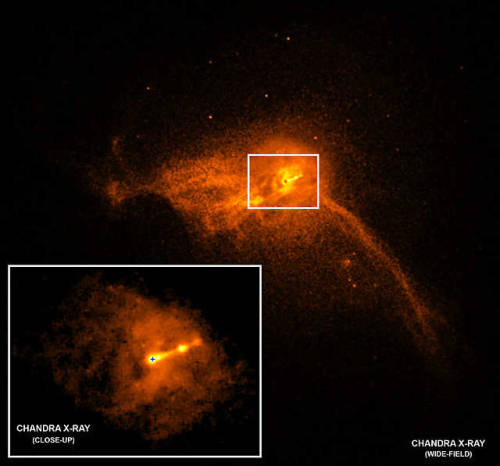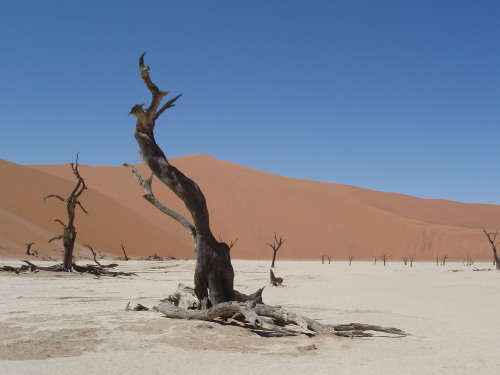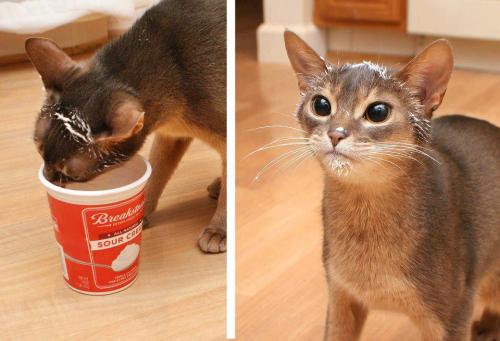There Are Three Breeds Of Cat:
There are three breeds of cat:
Chonk
Goblin
Yeah that looks like a cat
More Posts from Rocks-everywhere and Others

“Most news outlets are only showing the blurry zoomed in picture of the black hole so I’m posting the entire zoomed-out image of the black hole and everything it is consuming. The tiny black spec in this image is 6.5 billion times the size of our sun. This thing is HUGE.” Dan Farr
I have to admit, I am a bit obsessed with Popocatépetl. Probably because I lived with its view for a year.
This morning, 1/9/20, it had another great explosion.

When Dwarfs Meet Giants, and Other True Cosmic Fairy Tales
It’s easy to get lost in fantasy worlds through science-fiction movies and novels, but did you know that some of your favorite fairy tale characters actually exist in cosmic form? From dwarfs and giants to shape-shifters and buried treasure, the universe is home to a multitude of mystical objects.
White Dwarf Stars

You’ve probably heard of dwarfs like Happy and Sneezy (or Gimli and Thorin), but it’s unlikely you’re familiar with the space-dwelling dwarfs with names like Sirius B and ASASSN-16oh. White dwarf stars like these are typically about the size of Earth, which is pretty small as far as stars go. They represent one of three final stages of stellar evolution, along with neutron stars and black holes. Each star’s mass determines which one it will ultimately become. Stars much more massive than the Sun typically become neutron stars or black holes, and lower-mass stars end up as white dwarfs.

Our Sun will eventually become a white dwarf after it exhausts its fuel, but don’t worry — we’ve got several billion years to go! Before it is reduced to a white dwarf it will actually expand into a red giant, swelling out to encompass Earth’s orbit. But we don’t have to wait billions of years to see stellar giants … some already peek out at us from the cosmic deep.
Giants and Supergiants

The red giant star Aldebaran, located about 65 light-years away, is about 5,000 times bigger than Earth. Our Cassini spacecraft imaged Aldebaran through Saturn’s rings in 2006, but you can see it for yourself during northern winter. Just look for the brightest star in the constellation Taurus.

Fairy tale giants may be taller than trees, but these supergiant stars can be over 100,000 times “taller” than our entire planet! Supergiant stars are likely becoming more rare as time goes on. While scientists believe they used to be more common, our whole galaxy now contains just a small smattering of supergiants.

These massive stars grace the galaxy for a relatively small amount of time. They burn through their fuel extremely quickly — in just a few million years, as opposed to hundreds of billions of years for the smallest stars! Supergiants often end their lives in dramatic explosions called supernovae.

Betelgeuse — the bright, reddish star marking the shoulder of Orion — is nearing the end of its life and has expanded to become a red supergiant star. It is destined to explode as a supernova, which might happen tonight … or within the next few hundred thousand years.
Ghostly Solar Neutrinos

Even an average star like our Sun has some seemingly magical qualities. Each second, it sends billions of phantom-like neutrino particles out into space. They travel almost as fast as light and don’t usually interact with normal matter. Billions of them are zipping harmlessly straight through your body while you read this. Even at night they go through the entire Earth before reaching you!

But that’s not all … these ghostly particles are shape-shifters, too! Neutrinos can change characteristics over time, morphing between different versions of themselves. Spooky!
Buried Treasure in the Heart of the Galaxy

Extensive clouds of dust enshroud the heart of our Milky Way galaxy, hiding it from our view — at least when it comes to visible light. The dust isn’t as big a problem for infrared light, however, which has allowed us to get a glimpse of our galaxy’s chaotic core thanks to our Hubble and Spitzer space telescopes.

Future missions may peer into the galactic core in search of buried treasure — thousands of planets orbiting distant stars!
Want to learn about more cosmic objects? Find them here!
Make sure to follow us on Tumblr for your regular dose of space: http://nasa.tumblr.com
As cat owners we like to joke about how the cat is the one who’s really in charge, but let’s be honest here: my cats think they’re in charge, but they’re also fucking dumbasses. It’s sort of an incompetent-king-and-long-suffering-advisor arrangement, if the king were prone to getting their head stuck in Kleenex boxes.
I legit cannot wait to go do amethyst hunting in GA again! What a blast. Take a look at the dark purple in this one. 😍💎⛏😁👍
paleocris
what was the name of the fish my geology teacher called “bad dude” because i put bad dude in my notes and have no idea what the real name is
Forecasting the Weather 2: Clouds
Hello lighthouse keepers, sailors, fishermen, and even pirates! I recently made a post about predicting the weather while at sea. I mentioned in the post that clouds can also help predict the weather, but didn’t include them for brevity, but I did say I’d make that post another day. Well, today is that day! Consider this your guide for using clouds to anticipate the storms before they happen. (Pictures correlate with the word above them)
Fair Weather Clouds
Cirrus (see-ruhs) clouds are thin and wispy due to the wind blowing them around the sky. They look like this:

Cirrocumulus (see-ruh-kyoo-myuh-luhs) clouds are thin, patchy, and generally rippled or poofy. They generally come out in the winter. They look like this:

Altocumulus (al-tow-kyoo-myuh-luhs) clouds are rippled, fluffy and layered, the layers ranging from white to greyish. They look like this:

Cumulus (kyoo-myuh-luhs) clouds are what you think of when you think of clouds. They’re big, puffy, and come in lots of different shapes.

Stratus (stra-tus) clouds are thin and sheet-like, and always white and will generally cover most if not all of the sky.

Stratocumulus (stra-tow-kyoo-myuh-luhs) congregate in honeycomb-esque shapes, and they are patchy white or gray in color. Though these are fair weather clouds, they can indicate a storm is on its way.

Rain Clouds
Cirrostratus (see-row-stra-tuhs, sur-row-stra-tuhs) clouds also cover the sky, and can cause the halo-ing effect that was mentioned in part 1 of this post. Rain is probable within the next day.

Altostratus (al-tow-stra-tuhs) clouds are grey, cover the sky, and mean continuous rain.

Nimbostratus (nim-bow-stra-tuhs) clouds are big, puffy, gray, and thick. They’re often so thick they can obscure the sun. These also indicate continuous rain.

Cumulonimbus (Kyoo-myu-low-nim-bus) clouds are high, towered, puffy and white. They indicate upcoming thunderstorms and are generally accompanied by other cumulus clouds.

Sorry for such a long post but the pictures were necessary! Hope this second part is a good supplement to part one! Have fun keeping your eyes on the skys!

Deadvlei, the dead marsh It is amazing the effect water can have in bringing life, and then taking it from an area. Deadvlei is a white clay pan in Namibia near the Tsauchab River. During an especially heavy period of rain, the river flooded leading to a shallow surface layer of water forming over the clay pan. This water allowed Camel Thorn trees to grow and then mature. However, during a drought the water dried up, and sand dunes around the edge of the clay pan blocked the river’s flood path into the area. This drought lead to the trees dying, approximately 700 years ago. Despite the death of the trees, the skeletons remain and despite being blackened by the sun, appear structurally as they would have when they died. This lack of decomposition has occurred, again, due to lack of water as the trees cannot decompose without it. ~SA Image credit: https://commons.wikimedia.org/wiki/File:Deadvlei_trees_dunes.JPG

-
 goth-queen-supreme reblogged this · 4 weeks ago
goth-queen-supreme reblogged this · 4 weeks ago -
 goth-queen-supreme liked this · 4 weeks ago
goth-queen-supreme liked this · 4 weeks ago -
 fledermaus-and-gerald reblogged this · 4 weeks ago
fledermaus-and-gerald reblogged this · 4 weeks ago -
 ondrium reblogged this · 4 weeks ago
ondrium reblogged this · 4 weeks ago -
 misplaced-aquarius liked this · 1 month ago
misplaced-aquarius liked this · 1 month ago -
 kattsyn reblogged this · 1 month ago
kattsyn reblogged this · 1 month ago -
 kattsyn liked this · 1 month ago
kattsyn liked this · 1 month ago -
 hellomynameismoo reblogged this · 1 month ago
hellomynameismoo reblogged this · 1 month ago -
 hellomynameismoo liked this · 1 month ago
hellomynameismoo liked this · 1 month ago -
 pairofsunflowers liked this · 1 month ago
pairofsunflowers liked this · 1 month ago -
 ahasiw-okitowin reblogged this · 1 month ago
ahasiw-okitowin reblogged this · 1 month ago -
 damneddualities reblogged this · 1 month ago
damneddualities reblogged this · 1 month ago -
 damneddualities liked this · 1 month ago
damneddualities liked this · 1 month ago -
 tartrazeen reblogged this · 1 month ago
tartrazeen reblogged this · 1 month ago -
 cerulapis liked this · 1 month ago
cerulapis liked this · 1 month ago -
 ofgoodstars reblogged this · 1 month ago
ofgoodstars reblogged this · 1 month ago -
 edibletrees2 reblogged this · 1 month ago
edibletrees2 reblogged this · 1 month ago -
 unionizedbees liked this · 1 month ago
unionizedbees liked this · 1 month ago -
 omniapod reblogged this · 1 month ago
omniapod reblogged this · 1 month ago -
 cherrysdead liked this · 1 month ago
cherrysdead liked this · 1 month ago -
 ilikeiobsess reblogged this · 1 month ago
ilikeiobsess reblogged this · 1 month ago -
 tigerdragonbee liked this · 1 month ago
tigerdragonbee liked this · 1 month ago -
 traffic-wizard reblogged this · 1 month ago
traffic-wizard reblogged this · 1 month ago -
 traffic-wizard liked this · 1 month ago
traffic-wizard liked this · 1 month ago -
 writingfeedsthedarkestones reblogged this · 1 month ago
writingfeedsthedarkestones reblogged this · 1 month ago -
 dragora7747 liked this · 1 month ago
dragora7747 liked this · 1 month ago -
 dragonsampersanddragons reblogged this · 1 month ago
dragonsampersanddragons reblogged this · 1 month ago -
 thesubtextmachine reblogged this · 1 month ago
thesubtextmachine reblogged this · 1 month ago -
 kaseytoretto118 liked this · 1 month ago
kaseytoretto118 liked this · 1 month ago -
 ace-4-fuck reblogged this · 1 month ago
ace-4-fuck reblogged this · 1 month ago -
 hzhet reblogged this · 1 month ago
hzhet reblogged this · 1 month ago -
 arachnes-web29 liked this · 1 month ago
arachnes-web29 liked this · 1 month ago -
 notverybrightraven reblogged this · 1 month ago
notverybrightraven reblogged this · 1 month ago -
 notverybrightraven liked this · 1 month ago
notverybrightraven liked this · 1 month ago -
 massivelynerdymint liked this · 1 month ago
massivelynerdymint liked this · 1 month ago -
 tunathemerchant reblogged this · 1 month ago
tunathemerchant reblogged this · 1 month ago -
 tunathemerchant liked this · 1 month ago
tunathemerchant liked this · 1 month ago -
 kepler-438-b reblogged this · 1 month ago
kepler-438-b reblogged this · 1 month ago -
 galateanmarble reblogged this · 1 month ago
galateanmarble reblogged this · 1 month ago -
 galateanmarble liked this · 1 month ago
galateanmarble liked this · 1 month ago -
 teaandtomatoes602 reblogged this · 1 month ago
teaandtomatoes602 reblogged this · 1 month ago -
 malcis reblogged this · 1 month ago
malcis reblogged this · 1 month ago -
 nottapotato reblogged this · 1 month ago
nottapotato reblogged this · 1 month ago -
 hazelsluck reblogged this · 1 month ago
hazelsluck reblogged this · 1 month ago -
 sycamorewrought liked this · 1 month ago
sycamorewrought liked this · 1 month ago -
 kitawolf12 reblogged this · 1 month ago
kitawolf12 reblogged this · 1 month ago -
 theladyro reblogged this · 1 month ago
theladyro reblogged this · 1 month ago -
 juliamoonia liked this · 1 month ago
juliamoonia liked this · 1 month ago -
 mokuflower liked this · 1 month ago
mokuflower liked this · 1 month ago -
 cheese--6 liked this · 1 month ago
cheese--6 liked this · 1 month ago
225 posts
